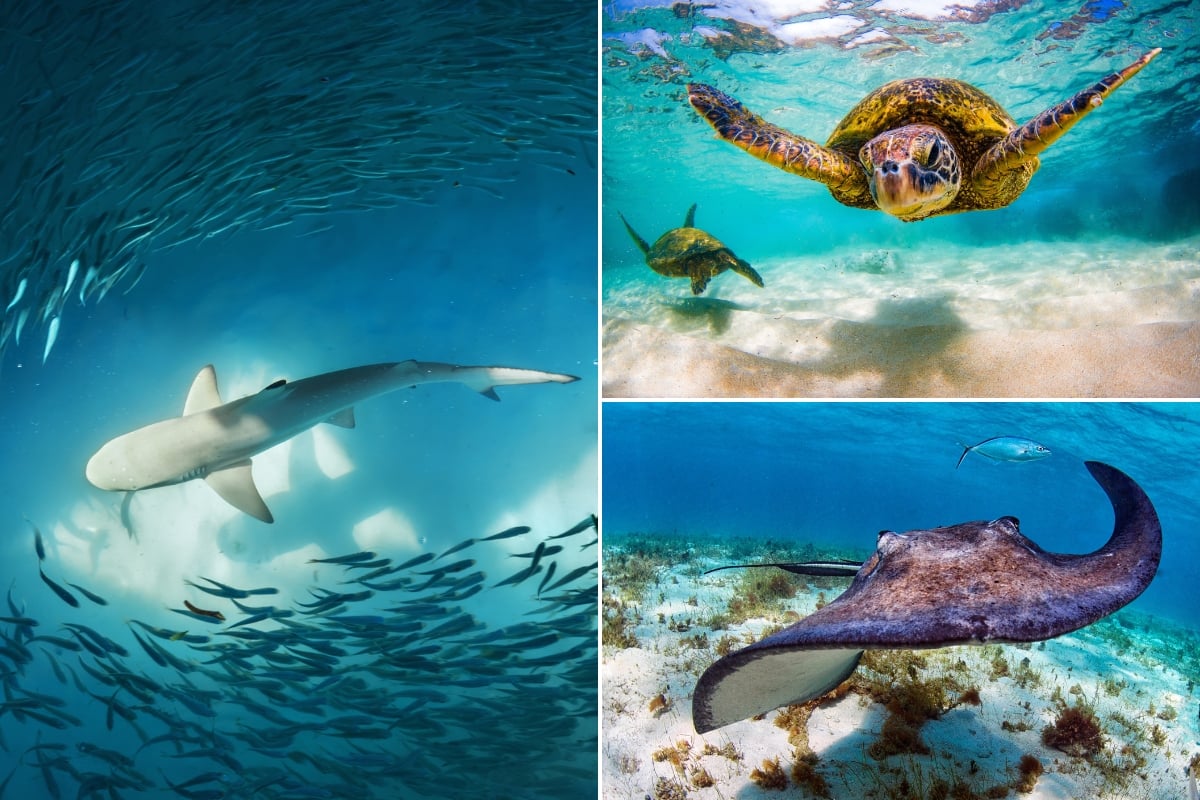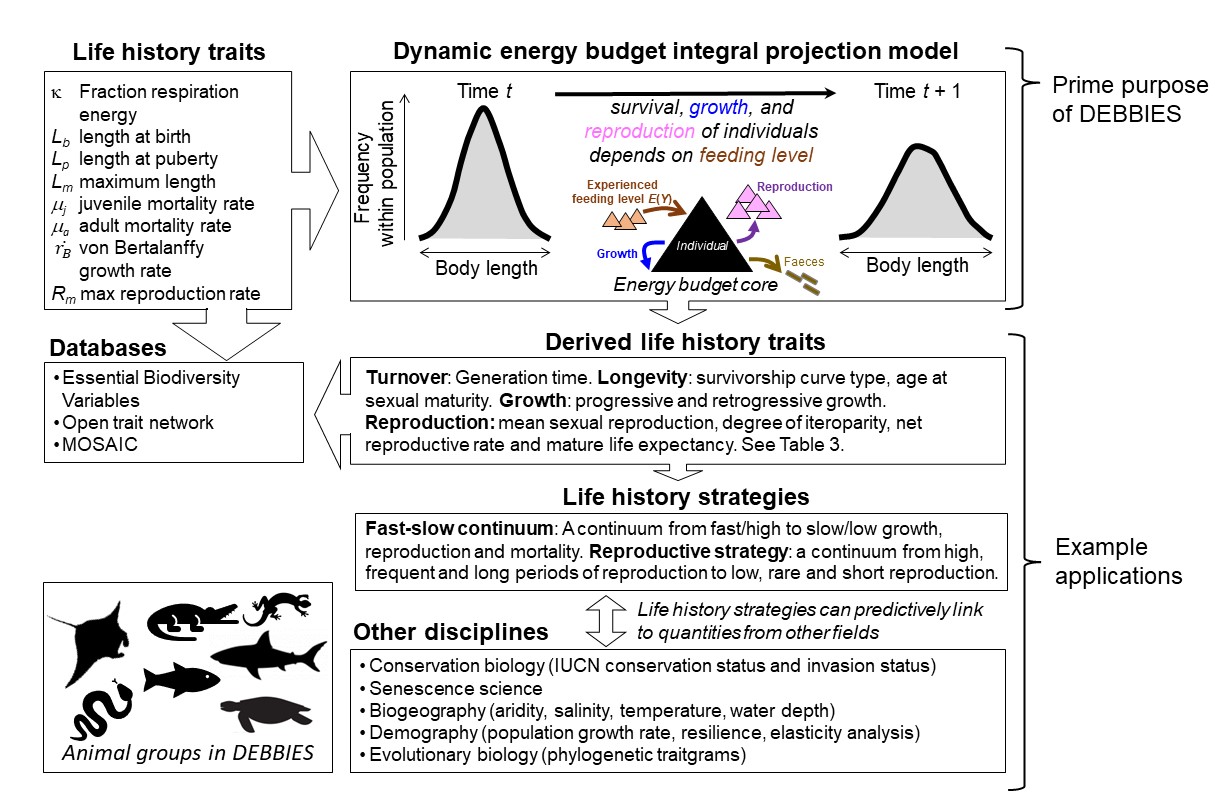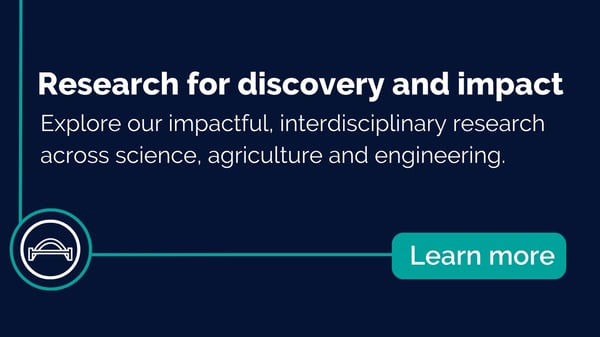Big data needs big ideas to predict species responses to climate change
17 April 2024 | By: Dr Isabel Smallegange | 4 min read
In the face of rapid and extreme environmental changes, predicting how animals respond has become a critical challenge.
Dr Isabel Smallegange, explains how a team of Newcastle scientists and students have created the DEBBIES dataset, and what big data can tell us about species responses to climate change.
Contents:
- Big data in biology
- The need for mechanistic understanding
- Scaling up
- Finding a name
- Inside the DEBBIES dataset
- Using the dataset
- Expanding the dataset
Big data in biology
In biology, data on species abundance, diversity and traits are collected within large, international collaborative projects, citizen science projects, and permanent monitoring stations. These data are openly available in big biodiversity databases: big data.
The need for mechanistic understanding
Big data receives big interest, giving the impression that big data approaches can solve (big) problems in ecology. But is that so?
Can we use big data to predict ecological responses to current and future climate change? Yes, but only if a dataset includes the biological mechanisms that underpin the variation in the actual data.
Why? Because if you want to predict how species respond to novel climate change, you cannot rely on descriptions of how species look and behave right now. You need to know why and how organisms look and behave the way they do. Only then will you be able to confidently extrapolate your understanding of a biological system to new circumstances. Without knowing the mechanisms that drive biological variation, predicting response to novel change becomes a game of chance like Russian roulette.
Unfortunately, not many big datasets include the mechanisms that drive biological variation. Probably because such data are much harder to collect, but do we really need them, you might wonder? Isn’t it much easier just to collect field data and analyse patterns, rather than going into the nitty gritty details of finding out what processes actually drive these descriptive data patterns? Yes, it might be easier, but without knowing the underlying processes that drive population dynamics, forecasts of how species will respond to climate change will be a shot in the dark.
.jpg?width=1000&height=667&name=Figure%202%20pace-of-life%20(1).jpg) Figure 1. Examples of species that have a fast pace-of-life, like rabbits, which produce many offspring but suffer high mortality, and a slow pace-of-life, like elephants, which produce only a few offspring in their lifetime but suffer low mortality.
Figure 1. Examples of species that have a fast pace-of-life, like rabbits, which produce many offspring but suffer high mortality, and a slow pace-of-life, like elephants, which produce only a few offspring in their lifetime but suffer low mortality.
Analyses of descriptive population data from hundreds of plant and animal populations show that species with a faster pace of life (think of rabbits: Fig. 1) are more sensitive to changes in how predictable environmental conditions are than species with a slower pace of life (think of elephants: Fig. 1) [1]. But when a colleague and I ran the same analyses on an, admittedly, much smaller dataset of only two species, we found the exact opposite result [2]. But, because we used a mechanistic approach, we could explain that these species respond differently to change because they budget their energy in different ways. What is more, when we increased the dataset with mechanistic descriptions of energy budgets of a ‘whopping’ 34 species, we found that the association between a species’ pace-of-life and how it responds to change, broke down completely.
Scaling up
But 34 species is not many compared to existing descriptive datasets that include population data on hundreds and hundreds of plant and animal species. We had to scale up. My publication in 2017 of a new population model, that includes a mechanistic description of how species allocate their energy to growth and reproduction [4], was the start.
My students were eager to apply the model to understand from first principles how their favourite animal species would respond to climate change. As time went by, an increasing amount of energy budget data from a wide range of species was added to the database.
In 2022, Sol Lucas, whose PhD is on shark behaviour and conservation, proposed extending the model’s application to elasmobranchs, encompassing sharks, skates and rays. Sol’s enthusiasm led him to extend the data set, now comprising over 180 species, more than tripling its size. This was the moment we decided to write a paper on this mechanistic big dataset so others could use it as well [5].
Finding a name
But first we had to name the dataset. A ‘BUDDY’ to help you analyse life history strategies? Not bad, but we settled on ‘DEBBIES’ to capture the fact that the dataset is built to be used in Dynamic Energy Budget, ‘DEB’, models, and to add a bit of our own identity, by having ‘IE’ for Isabel and ‘S’ for Sol. Make of it what you want, but that was that.
Inside the DEBBIES dataset
So, what is in this dataset (Fig. 2)? It contains estimates of eight life history traits (length at birth, puberty and maximum length, maximum reproduction rate, fraction energy allocated to respiration versus reproduction, von Bertalanffy growth rate, juvenile and adult mortality rate: Fig. 2: top-left) for 185 ectotherm species. More than 99% of species on Earth are ectotherms; they are taxonomically diverse and their growth and reproduction can be captured in simple energy budget models. Our dataset contains many elasmobranch species, but also ray-finned fish, some snakes, turtles, lizards, and crocodiles.

Figure 2. Workflow of parameterising the mechanistic population model, called a Dynamic Energy Budget Integral Project Model (DEB-IPM), and example applications, including what databases DEBBIES can feed into (Essential Biodiversity Variables [6]; MOSAIC [7]). DEBBIES currently contains 185 ectotherms of 18 different orders. Eight life history trait values (top-left box) are required to parameterise a DEB-IPM (top-right box). Once parameterised, it can be used to calculate a further nine derived life history traits that can in turn be summarised into life history strategies. These, in turn, can be linked to quantities from other disciplines.
Using the dataset
How can you use the dataset? This is open to the user, be they a student or academic, but we give some suggestions for future analyses in the paper, highlighted in Fig. 2. Because the dataset describes the biology of all species by the same energy budget parameters, the dataset is ideally suited for comparative studies of how different energy budget strategies drive life histories and population dynamics, and, crucially, responses to novel climate change.
Expanding the dataset
What is next? Well, there are still plenty of ectotherm species not currently included in the dataset and plenty of students eager to contribute. To quote Sol Lucas, the co-author of the paper:
“I contributed data on sharks, skates and rays to DEBBIES as part of my PhD. Sharks, skates, and rays are a highly threatened group of animals, but we still know relatively little about many species. We’re using the data in DEBBIES to map out life history strategies for 157 species, predict population growth rates and their resilience to bounce back from population declines. I’m glad to think that the data sourced in my project can be used by others to answer questions about the life histories of these wonderful species”.
We will continue to add species to this dataset, making sure we also focus on the smaller ones like polychaetes (marine worms) and microorganisms. We hope that all the efforts combined will give us greater insights into how species' life histories shape their population dynamics and responses to climate change.
References
- Paniw, A. Ozgul and R. Salguero‐Gómez. Ecology Letters 21, 275–286 (2018). DOI: 10.1111/ele.12892
- M. Smallegange and M. Berg. Ecology and Evolution 9, 9350-9361 (2019). DOI: 10.1002/ece3.5485
- Rademaker, A. van Leeuwen and I.M. Smallegange. Journal of Animal Ecology, online (2024). DOI: 10.1111/1365-2656.14050
- M. Smallegange, H. Caswell, M.E.M. Toorians and A.M. de Roos. Methods in Ecology and Evolution 8: 146-154 (2017).
- M. Smallegange and S. Lucas. Scientific Data 11:153 (2024). DOI: 10.1038/s41597-024-02986-x
- D. Kissling et al. Nature Ecology & Evolution 2: 1531-1540 (2018).
- Bernard et al. Scientific Data 10: 335 (2023).
You might also like
- read the paper: Smallegange, I.M., Lucas, S. DEBBIES Dataset to study Life Histories across Ectotherms. Sci Data 11, 153 (2024). https://doi.org/10.1038/s41597-024-02986-x
- learn more about Dr Isabel Smallegange, Senior Lecturer in Population Biology, by reading her staff profile or visiting her personal website
- follow Sol Lucas, paper co-author, on X
- read the press release: Helping predict cold-blooded animals' response to environmental shifts
- explore our diverse and wide-ranging ecology and conservation research, computational biology research, and our School of Natural and Environmental Sciences
